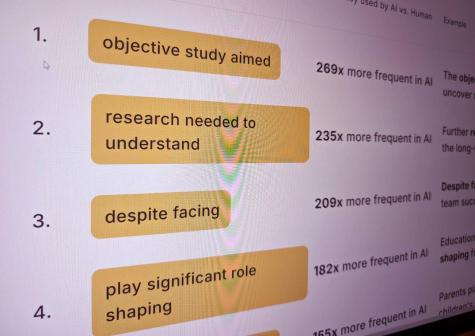Higher ed CIOs grapple with privacy, funding heading into 2019

Though data dominated EDUCAUSE’s top IT issues for higher education in 2019, privacy and funding each play a prominent role in the future of information technology in universities across the country.
Susan Grajek, EDUCAUSE’s vice president for communities and research, told EdScoop in a recent interview a heightened focus on privacy comes on the heels of the European Union’s embrace of GDPR, or the General Data Protection Regulation.
“That really grabbed the attention of our field this year,” Grajek said. “That continues to occupy the attention of many. The reason that we’re thinking about it in higher education beyond compliance, regulations and things like that is that schools are investing so much in data.”
On the investment front, though, Grajek noted that campus technology decision makers are struggling with a traditional mindset that the technology budget of a university and the institutional budget are two separate things, when in reality they are “one and the same.”
“That technology budget isn’t just about running the network and the data center,” Grajek said. “It’s about running the institution. It’s about helping to grow the institution.”
In an interview with EdScoop conducted at EDUCAUSE’s 2018 Annual Conference in Denver, Grajek explained the organizations’ emphasis on data, the emergence of privacy as a top priority and what this year’s list changes mean for higher ed CIOs in the year ahead.
I couldn’t help notice that privacy is right up there at number three, and it wasn’t even on last year’s list. How did privacy emerge as a top priority?
The most obvious, glaring reason that privacy emerged — I’ve got four letters for you: G-D-P-R. That really grabbed the attention of our field this year. Moving to try to understand it and unpack it, and then figure out how to comply with it. That continues to occupy the attention of many. But then you add onto that all the [revelations] about Facebook and how we are all as consumers worried about our individual privacy.
People are thinking carefully about this. The reason that we’re thinking about it in higher education beyond compliance, regulations, and things like that is that schools are investing so much in data. We are understanding the power of data and especially applied to algorithms, and soon machine learning and predictive analytics — things like that to not just give us information, but to influence outcomes, to really help make higher education more affordable and to help students graduate.
As we become more and more focused on data and what data can do for us, then that also brings up the flip side about the ethics of data. How do we really approach the data that we have, the algorithms that we have, ethically? I think that’s another big thing behind privacy.
What do you feel were the big “A-ha!” moments for this year?
There are a couple of things. One is the big theme about data — it just really stands out.
Five of the issues on the top 10 IT list are about data, whether it’s data integrations, data driven decision making, or data management and governance. Security is about data, privacy is about data, and it really is about that data journey that higher education has been on for awhile. It’s really accelerating now.
That to me is the big thing. But in terms of a couple of other things, what’s changed is, if you look at digital integrations, student success, higher education affordability, and some of those other items, they were on the list last year, and I encourage you to dig deeper and to go and read the definitions of those, because in many cases last year it was about the structure and creating the infrastructure. This year, it’s about scaling, it’s about strategy and moving up the ladder. What that is doing is preparing us for the big theme that we’re going to be focused on next year, which is digital transformation. It has three components; culture, workforce, and technology.
I wasn’t ready to call it for digital transformation for 2019, but I see the seeds of digital transformation in the top 10 issues, which is why EDUCAUSE is really going to be focused on helping to lead the field, and helping to point the way. What we have right now is we have a definition which gives us a framework to work with.
We have examples already in the field of where the future is here today unevenly distributed throughout our ecosystem. We’re bringing those forward because it’s one thing to see this and it’s another thing to say, “Well, how do I make that happen on my campus?” We’re going to be pairing those exemplars with some tools and resources and fostering conversations, so that we can really help accelerate higher education’s digital transformation.
Last year “student centered institution” was number six, and now it’s number four. Why do you think that’s become more important?
I think it has gotten more important for a few reasons. Last year was the first year it was on the list, right? And so to see it enter at the list at all was pretty exciting last year, and then to see it move up is even more exciting.
When members talk about student success, they talk about using data to be able to help students in a predictive way, but also kind of a nudging way. One of the things that they emphasized in several conversations was this is a journey that will extend beyond our professional lifetimes. It is not three to five years — it’s 10, 20 years or more. It’s really understanding that whole student, and understanding that the student outcome and that student credential is not just about the classroom experience and how do we think about their overall experience at an institution? How do we understand what their experiences outside the classroom? How do we help them matriculate? How do we keep that relationship alive as alumni?
I think another important component is that as institutions we see demographics working against us, right? That pool of traditional students is shrinking up, but at the same time there’s been this great movement toward the workforce and lifelong learning. I’m wondering if we’re going to hear the conversation in the lingo shift from student to learning as colleges and universities recognize that their alumni population is not just a source for donations, but is really part of their existing student population, their learner population, who they can bring back and retool and re-credential. I think that’s really exciting.
Sustainable funding is new on the list this year. What are you hearing about that? Can you explain what exactly that means?
What we see CIOs and campus leaders grappling with is that the technology budget and the institutional budget are thought of as two separate things. They’re really one and the same. That technology budget isn’t just about running the network and the data center. It’s about running the institution. It’s about helping to grow the institution.
But then it’s also about the innovation piece, the transformation piece. How do we develop a funding model that leaves room for innovation and transformation? How do we do that and recognize that innovation and transformation is creating that new business model that’s bringing in new funding sources? You have to take a little step forward and an investment in order to be able to rethink your business model and the sources of value that you deliver to the students, the community and the alumni whom you serve.
Technology is a key component of that.
Which list item scares you the most?
I think the ones that scare me the most are about money. I probably should’ve said information security — that might’ve been the one that you were expecting. Information security is an issue that affects us all. But higher education has a unique affordability challenge. If we really do embrace transformation and innovation, we can have an investment perspective on spending as opposed to a deficit and expense perspective on spending.
Not all of our institutions have that perspective, and it takes the entire leadership team to buy into that. So, that scares me because I wish that all of our institutions had that because they all need it, and they all deserve it, and this is not saying those leaders are bad, but it’s really saying, “How can we help develop those leaders and how can we bring them to the table?”
This interview transcript was condensed and edited for clarity. Wyatt Kash contributed reporting to this story.




